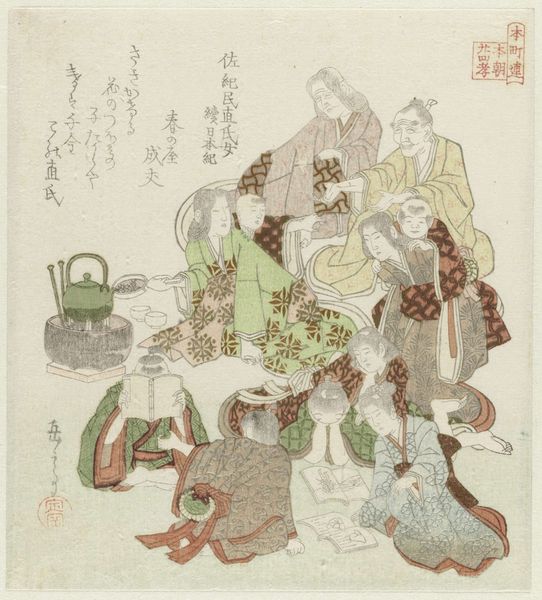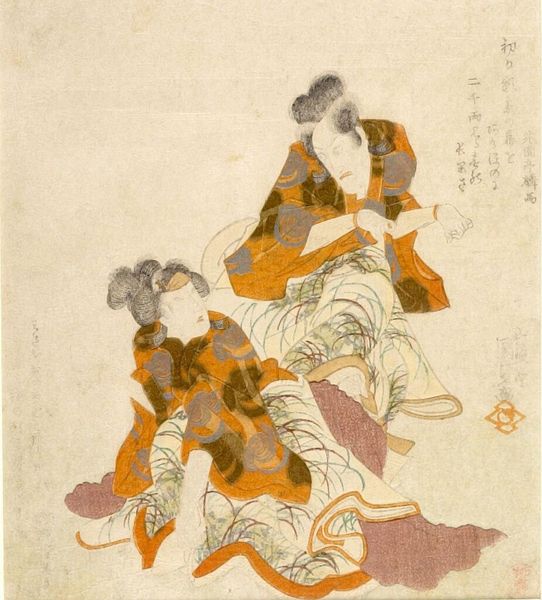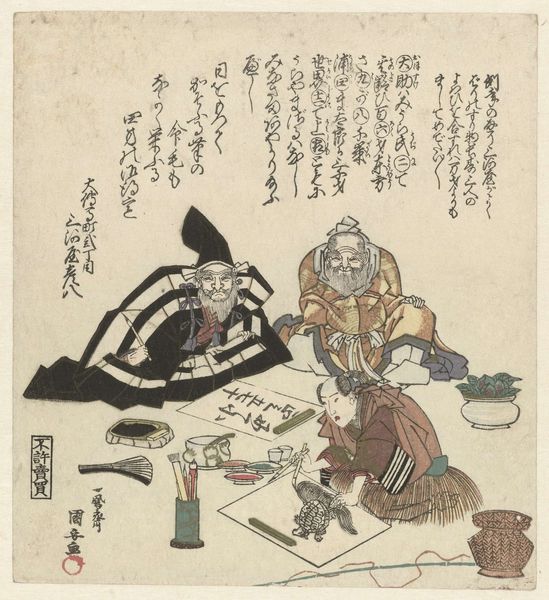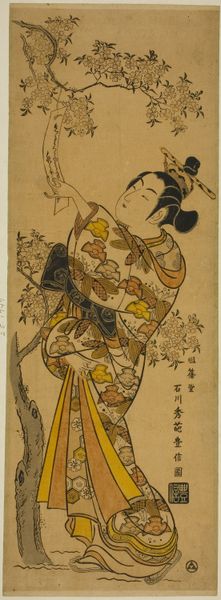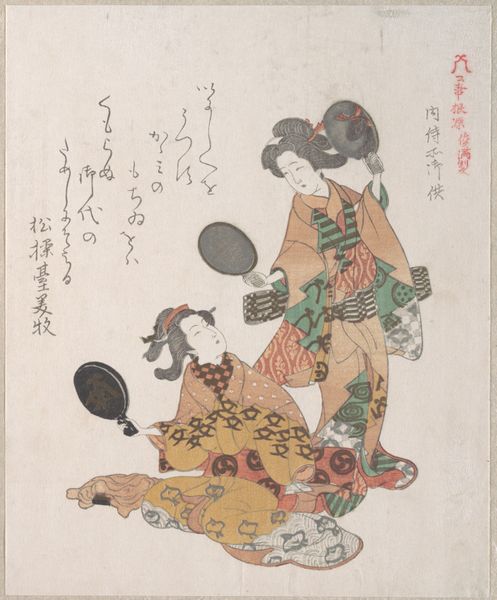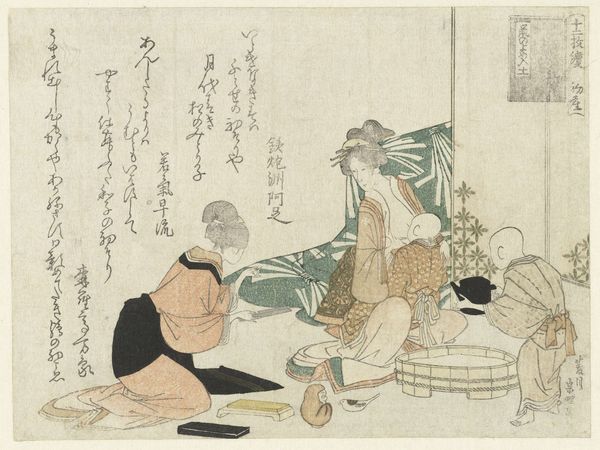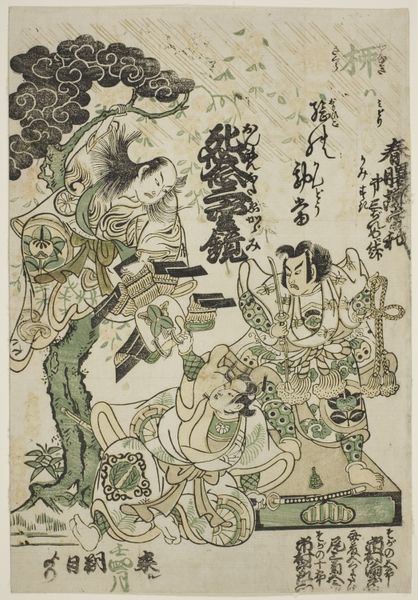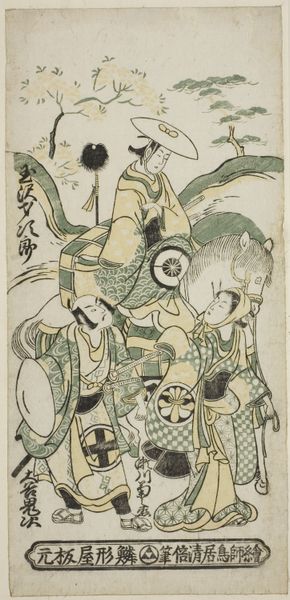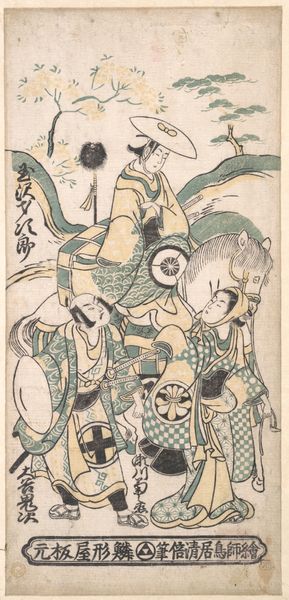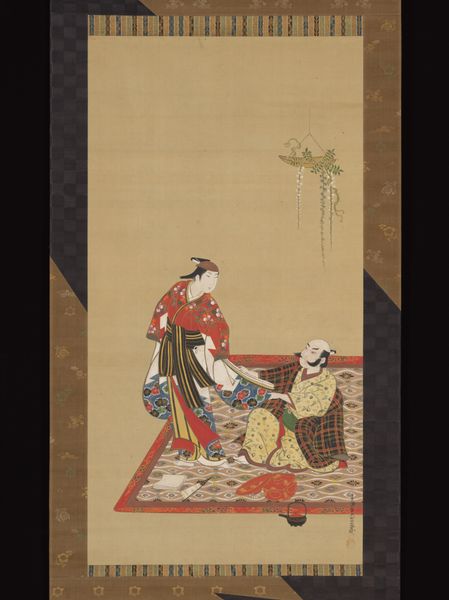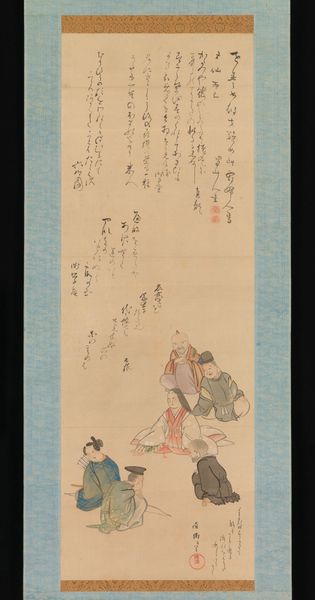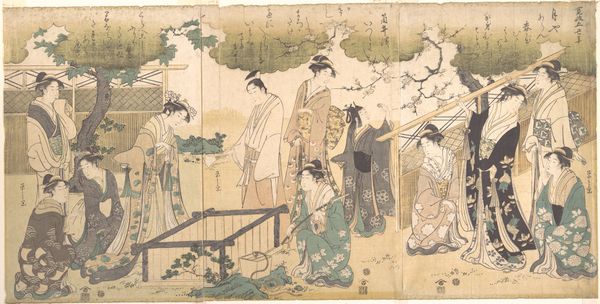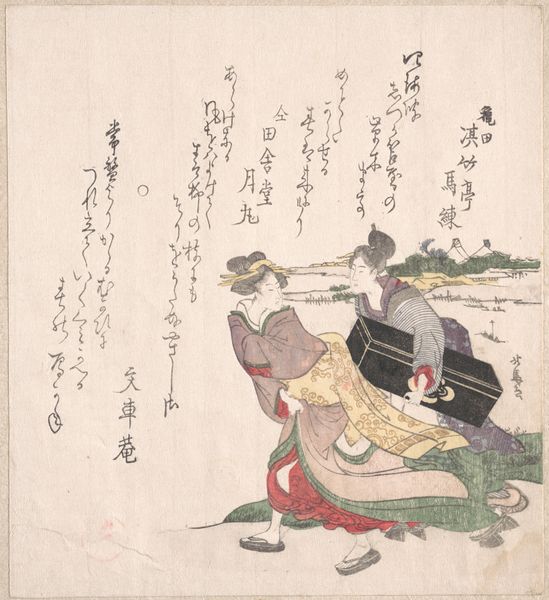
painting, watercolor
#
water colours
#
narrative-art
#
painting
#
asian-art
#
ukiyo-e
#
figuration
#
watercolor
Dimensions: 34 7/8 x 14 1/8 in. (88.6 x 35.9 cm)
Copyright: Public Domain
Nagasawa Roshū painted this hanging scroll, Seven Gods of Good Fortune, in ink and color on silk in Japan during the late 18th or early 19th century. Here, the syncretic nature of Japanese religion is on full display. The Seven Gods of Good Fortune became a popular subject in Japanese art, particularly during the Edo period, as Japan experienced relative peace and economic growth. Each god has a specific role and originates from a mix of Buddhist, Shinto, Taoist, and Hindu beliefs. Roshū shows them casually socializing, emphasizing their accessibility. Depictions like this catered to the merchant class, who sought prosperity and good fortune in their daily lives. The painting reflects a broader cultural trend of embracing eclecticism and commercialism. To fully appreciate this work, one might research Edo-period folklore, religious practices, and the socioeconomic conditions that influenced artistic patronage. Exploring these contexts reveals how art served both spiritual and social functions.
Comments
No comments
Be the first to comment and join the conversation on the ultimate creative platform.
